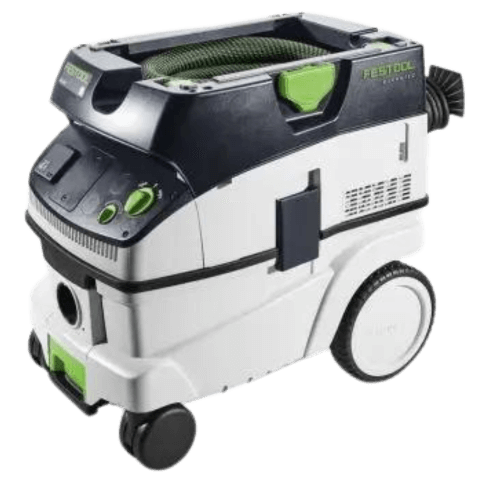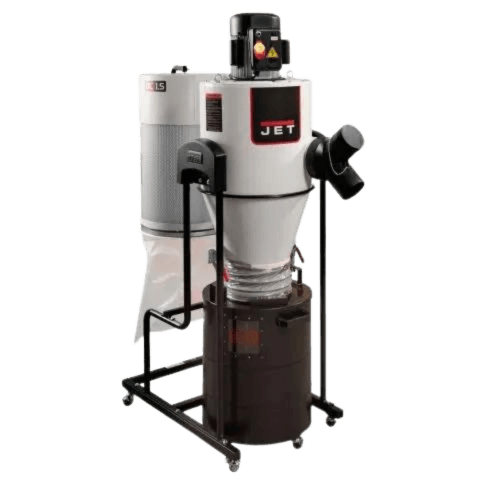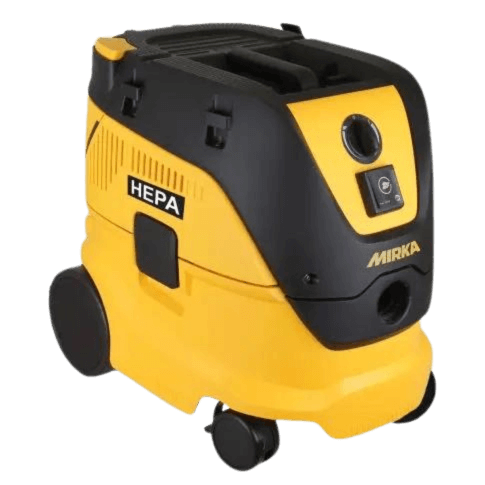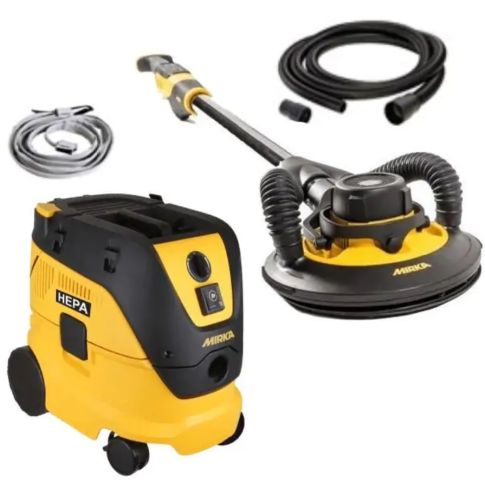
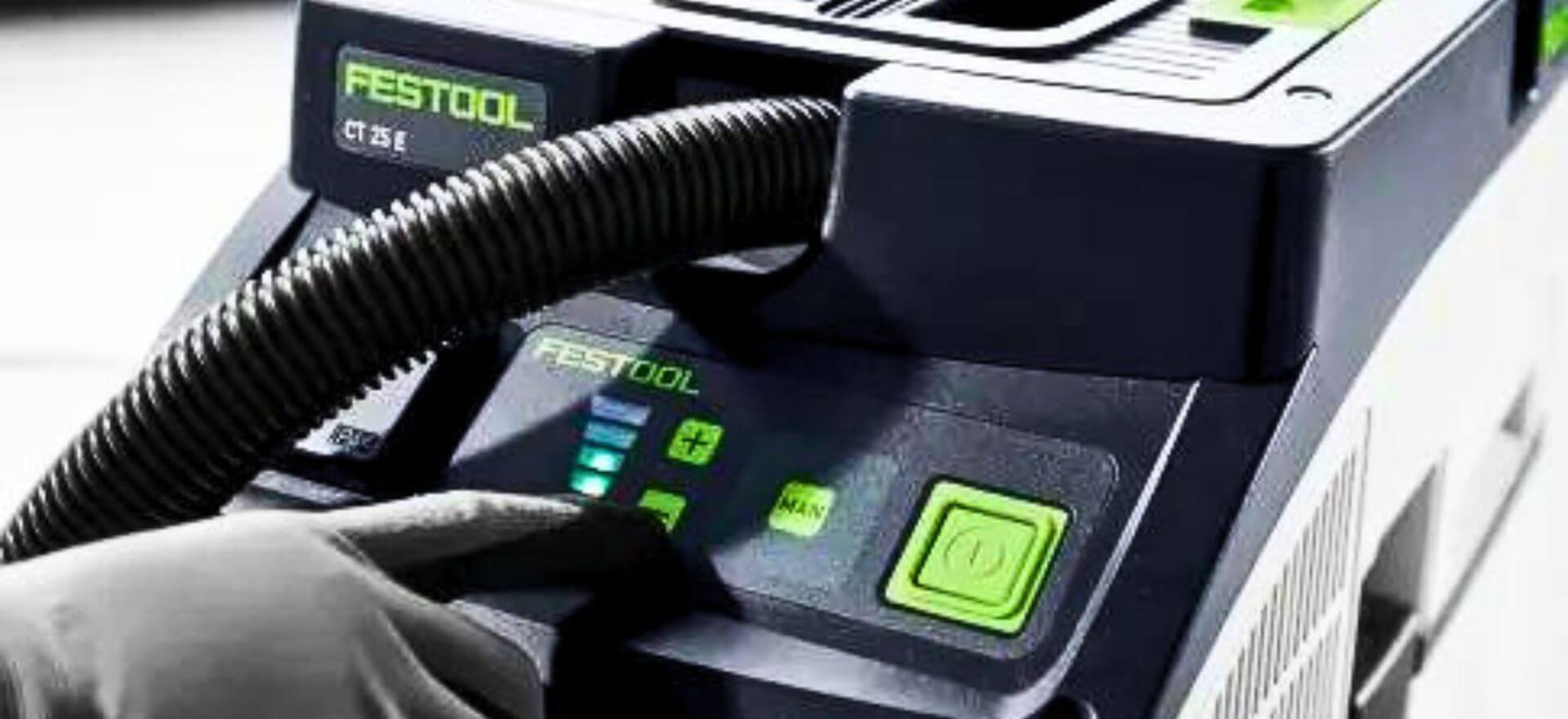

Dust-Free Workspaces: An Essential Guide to Dust Collection Systems
In woodworking and construction, cleanliness isn't just about aesthetics; it's a cornerstone of safety and efficiency. Among the myriad challenges faced by professionals and enthusiasts alike, the management of sawdust, drywall dust, and similar by-products stands out.
These seemingly innocuous particles can not only degrade the quality of your work but also pose significant health risks. The importance of removing such debris from your workspace cannot be overstated.
This article delves into the pivotal role of dust collection systems, spotlighting industry leaders like Festool, JET, Mirka, and Baileigh while also unpacking the intricacies of HEPA filters.
Why Dust Removal is Non-Negotiable
Health Hazard Mitigation: Sawdust and drywall dust are notorious for containing harmful particles that can exacerbate respiratory conditions and lead to long-term health issues. Prolonged exposure to these particles can also affect skin and eye health, making protective measures and dust removal essential in any workspace.
Enhanced Visibility and Precision: A clean workspace ensures that your measurements and cuts are precise, directly influencing the quality of your projects. Excess dust can obscure work surfaces and markings, leading to errors and wasted materials.
Tool Longevity: Dust can clog machinery and tools, leading to overheating, reduced efficiency, and, eventually, the need for costly repairs or replacements. Regular dust removal not only extends the life of your tools but also maintains their performance, ensuring they operate at their best.
Safety: Accumulated dust poses a significant fire hazard. A spark in the right conditions can lead to catastrophic outcomes. Moreover, the buildup of dust in a workshop can create slippery surfaces, increasing the risk of accidents and injuries, further underscoring the importance of maintaining a clean environment.
Dust Collection Systems: Your First Line of Defense
Investing in a robust dust collection system is not just a necessity; it's a game-changer. Brands like Festool, JET, Mirka, and Baileigh have set the standard in this domain, offering solutions that range from portable units for small workshops to industrial-grade systems for larger operations.
FESTOOL CT 26 E HEPA CLEANTEC DUST EXTRACTOR
Renowned for its innovation, Festool's dust extractors are designed for maximum mobility and efficiency, making them perfect for professionals on the move.
The mid-sized CT 26 dust extractor, with a 6.9 gallon capacity, is HEPA certified to ensure a non-hazardous, secure, and more productive work experience.
For easy transport and storage, the CT 26 has a built-in hose garage, anti-static hose, and cord wrap. With its combination of power, capacity, and mobility, the CT 26 dust extractor is a popular choice.
JET JCDC-1.5 CYCLONE DUST COLLECTOR
JET's dust collectors are a staple in the industry. They are known for their durability and power and can easily handle large volumes of dust.
The cyclone's two-stage separation provides more working cubic feet per minute than comparable horsepower single-stage units.
Heavy debris is pulled down to the collection drum before the debris stream reaches the filter, providing constant suction.
Heavy debris is captured in 20 gallon drum with quick-release levers and independent casters for quick emptying.
MIRKA 6IN DEROS DUST-FREE SANDING SYSTEM
Mirka focuses on dust-free solutions, their sanders and dust extractors work in unison to provide a virtually dust-free working environment.
This portable, dust-free sanding system offered by Mirka Abrasives has shown to reduce airborne dust from sanding operations by over 99%.
The solution is the result of combining a strong, yet quiet, dust extractor with patented Abranet mesh abrasives. 3 layers of filtration protection against harmful dust with the new Mirka DE-1230-PC.
BAILEIGH BAG STYLE DUST COLLECTOR
Baileigh's dust collection systems are celebrated for their robustness and versatility, catering to a wide range of materials and dust types.
This bag-style portable dust extractor produces 1,650 CFM of suction to eliminate fine debris from 2 machines at once. It takes 220-volt single-phase power, which is available in most shops.
30-micron filters on upper and lower bags will clear particles from the air so you can breathe safely and easily.
Implementing dust collection systems in the workplace involves strategic placement and regular maintenance to ensure optimal performance and safety. For instance, when using a table saw or miter saw, connect it to a portable dust extractor, like those offered by Festool, to capture sawdust at the source. Similarly, integrate Mirka's dust-free sanding systems to minimize airborne particles for sanding operations.
In workshops with diverse dust-generating activities, installing a central dust collection system from JET or Baileigh can provide comprehensive dust management. This setup involves running ductwork from each machine to a central collector, ensuring efficient dust removal across the workspace. Daily checks of the filter conditions and dust bag levels are crucial to maintain system efficiency.
Additionally, implementing a routine cleaning schedule for the filters, especially HEPA filters, will not only prolong their life but also enhance air quality. By adhering to these practices, businesses can create a healthier, safer, and more productive work environment.
UNDERSTANDING HEPA FILTERS
A critical component of any dust collection system is its filter, and HEPA (High-Efficiency Particulate Air) filters represent the gold standard. These filters are capable of trapping 99.97% of particles that are 0.3 microns in diameter or larger, ensuring that even the finest dust is captured and removed from your workspace.
HEPA filters of grades H13 and H14 are often preferred because they can effectively capture the fine particles produced by these activities, which are critical for maintaining a clean and safe working environment.
TYPES OF HEPA FILTERS
- Woodworking: Sawdust and finer wood particles can be effectively captured by H13 or H14 filters, minimizing health risks and ensuring cleaner air.
- Drywall and Construction: The fine dust produced when working with drywall or during demolition can be hazardous if inhaled. Using a HEPA filter with a higher grade helps to ensure that these particles are efficiently removed from the air.
- Painting and Finishing: The aerosols and fine particulates from spray painting and finishing processes are captured more effectively with higher-grade HEPA filters, ensuring the safety of the workspace.
Type A: Used in residential and commercial vacuum cleaners, offering a balance between efficiency and airflow.
Type E: Employed in environments where extremely fine particulate removal is necessary, such as cleanrooms.
Type D: Found in industrial and commercial settings, these filters are designed to handle larger volumes of air and dust.
In Conclusion
Maintaining a clean workspace is paramount for your projects and tools' safety, efficiency, and longevity. Professionals and enthusiasts can safeguard their health and enhance their work quality by incorporating a high-quality dust collection system equipped with HEPA filters.
Brands like Festool, JET, Mirka, and Baileigh offer cutting-edge solutions tailored to meet users' diverse needs, ensuring that your workspace remains pristine and productive. Remember, in the battle against dust, the right tools are your best allies.

